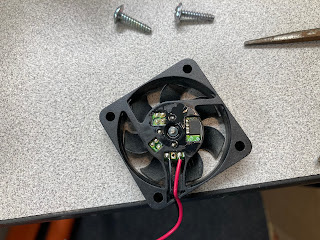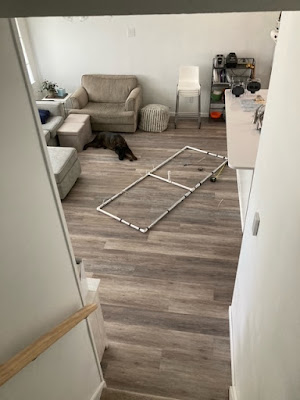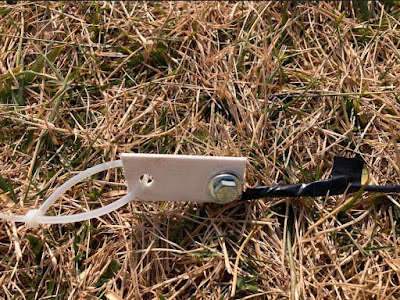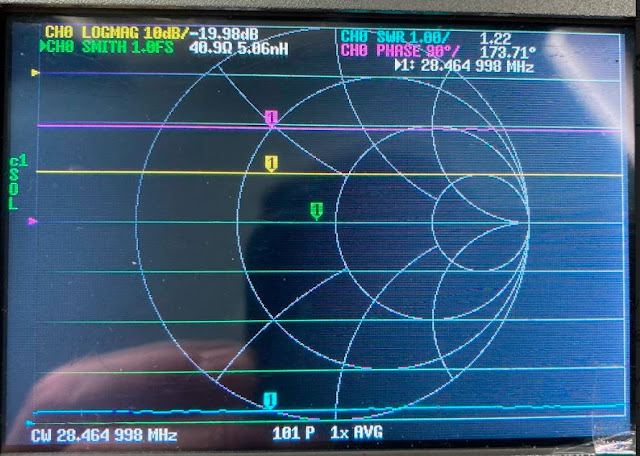These days it would seem as if
every product were manufactured with an engineered lifespan. I find this
particularly true with cheaper electronics. Parts and components of a unit
typically fail at what seems suspiciously close to mere weeks after a warrantee
period has ended. For some, this equates to the slow sad procession of obsolete
electronics to the curb on trash night. To others like me, it lends an
opportunity to open a unit up to see if something could be repaired or at least
harvested for parts.
Case in point, my father gave me an
old surround sound decoder he no longer wanted. I had purchased him a sound bar
which better suits his needs and he simply wanted to discard the old decoder. I
had asked him if it worked, and he said that it did but that it made a “funny
noise”. Not deterred, I took it home and opened it up.
Once the
cover was off, nothing seemed out of the ordinary. Typically, the first thing I
look for is any signs of stress or wear on the components. None of the
capacitors looked swollen and there were no observable burn marks or loose
solder joints. So, at first glance everything seemed ok.
The next
thing I did was hook the speakers up, apply power to the DUT (device under
test) and then listen for or smell if anything seemed out of place. No sparks,
or smoke erupted when power was applied. Furthermore, nothing seemed to burn or
smell different. The speakers had a very slight hiss to them when the volume
was turned up, so nothing with them sounded like a “funny noise”.
There was, however, a guttural whirling that emanated from
the DUT. On closer inspection it appeared that the fan was struggling to spin.
“Ahh this must be the problem!”, I thought. That seemed like a simple enough
fix. Maybe even a quick blast of air could remedy things.
I popped the fan out of the DUT and gave it a good blast of air. I noted that as per the label the fan ran on 12 volts, so I decided to hook it up to a power supply to ensure that the fan was still in working order. I dialed up the voltage on the power supply and the fan snapped to life with vigor. It ran a little loud, but it moved the air just fine. I was confident that the issue had been resolved and replaced the fan in the DUT.
I
disconnected the fan and read the voltage with a multimeter at the connection
point. It was a little over 8 volts. “Well, that is not 12 volts so that HAS to
be the problem.”, I thought to myself.
At this
point I was a little over my head. Somewhere, I imagined there had to be bad
components buried in the complex circuitry of the DUT. I searched with no
success to find a schematic. I attempted to look at the traces on the board to
get some sense of where to look next. Ultimately, I just started to randomly
probe around looking for 12 volts on the board.
When
none of this worked, I decided to enlist the help of fellow club member Chris Prioli,
AD2CS. He informed me that he would be happy to take some time and look at my
problem.
More
often than not, there is always something going on at the clubhouse every
Saturday. Whether it is a Tech Saturday presentation, the satellite station
flexing its muscles on the newest satellite deployed or restoring the clubhouse
to better than former glory. The activity there is both welcoming and
productive. This was the perfect place to meet up with Chris, and to get some
use out of the clubhouse’s test bench.
I met up
with Chris early on Saturday morning and after a few moments of discussing
Chris’ latest project we moved to the test bench to diagnose my issue. I
explained the problem that the DUT was experiencing to him. He then did a quick
search for a service manual to no avail.
We also removed the board in question and did a visual examination, nothing
seemed out of place.
Next, we hooked the DUT up to the
test benches’ isolated AC power supply. This was an interesting piece of test
equipment that isolates any circuit powered by it from AC mains. It also had
the ability to adjust the voltage so that a user can slowly increase the
voltage up to the recommended value. The DUT powered up normally and when
turned on via the front panel switch, the fan began to intermittently spin.
Up to
this point the steps taken were nearly identical to what I had performed in my
earlier analysis. Chris, however, took a different approach when he checked the
voltage being delivered to the fan. Instead of using a multimeter he opted to
use the oscilloscope instead. I asked about this and he informed me that the
“scope” could give us much more information about the voltage than merely its
value. For instance, it can tell us if it is flat or alternating in any form
over time. For the DUT it appeared that the voltage was a flat DC value a
little more than 8 volts. This led us to believe that the voltage being
delivered was probably not the issue since it was constant, with little to no
ripple in it.
Chris
had me remove the fan again, and he visually inspected it. “Look here.”, he said to me while spinning
the fan blades with his finger. He continued, “The fan does not spin smoothly,
there is some resistance”, while flipping the power switch of his custom
battery eliminator. This is a piece of test equipment that Chris had built of
his own design. It allows a user to flip through a series of DC test voltages
that are common battery voltages. We started low at 1.5 volts and gradually
increased. The fan started to intermittently turn at around 8 volts and finally
started spinning consistently around 12 volts.
Then it occurred to me that DC fans
should ideally start spinning with low voltage and gradually get faster, NOT
run intermittently. It seems like an obvious enough thought, but it had indeed
eluded me, with my limited experience in troubleshooting. So, my original impression
that the fan was the issue was correct and Chris agreed.
Rather than order a new fan, Chris wanted to see if we could restore the operation of the fan under test. He peeled off the label on the back of the fan to expose the electronics and bearing. He then used component cleaner and compressed air to dissolve and blow out any dirt in the moving parts. Finally, we hooked the fan up to a voltage source to get it spinning and we applied oil to the bearing. Now the fan spun smoothly as soon as voltage was applied. We reinstalled the fan and the DUT now had no issues.
There were a couple of different
ways that I could have addressed the problem. I could have scraped the unit for
parts, or I could have merely ordered a new fan, waited for its arrival and installed
it. Either would have worked out for me, but I feel that it would have wasted the
opportunity to learn and collaborate with fellow enthusiasts. After all, isn’t
that what being in a club is all about?


















































